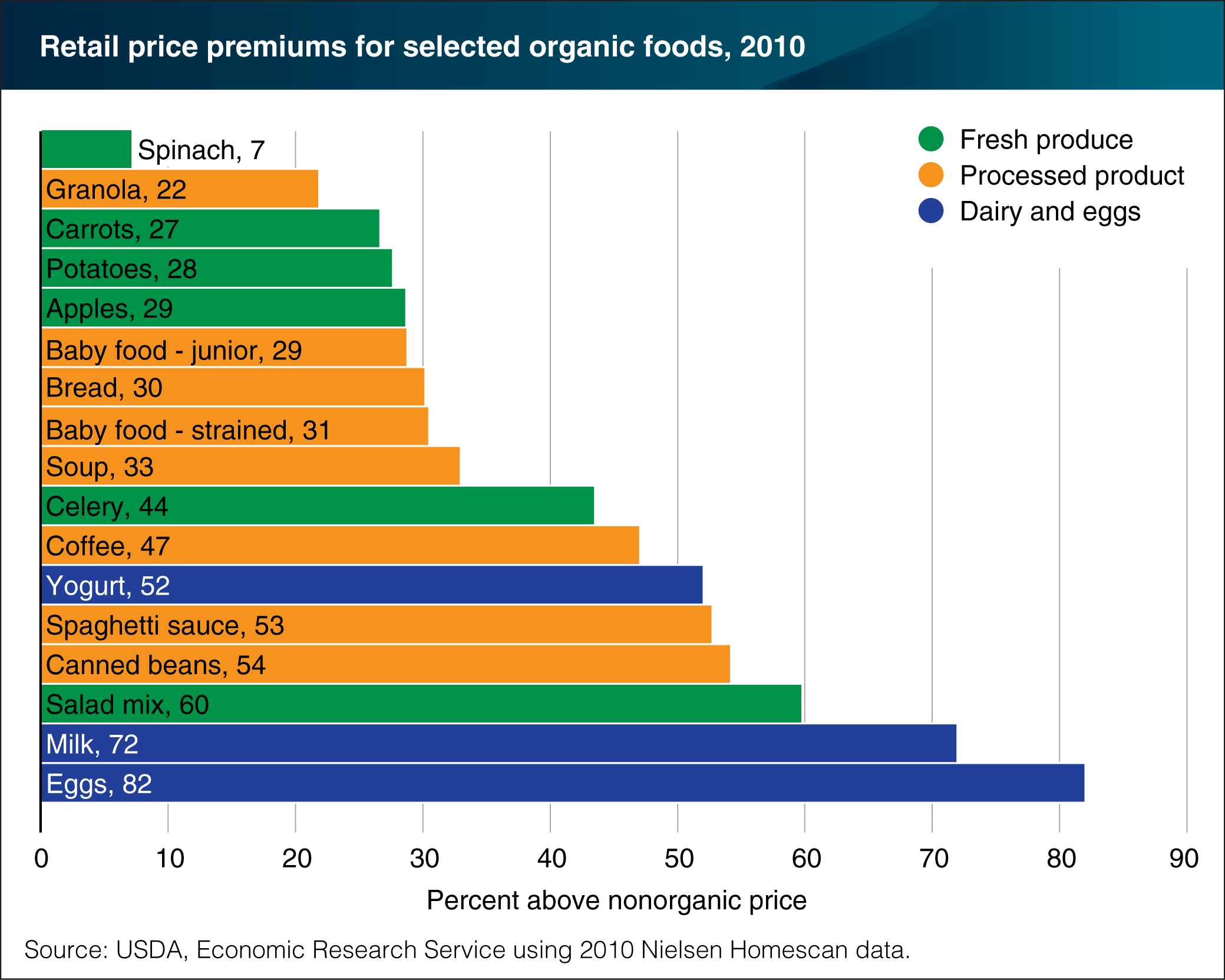Organic retail price premiums vary by food product
- by Andrea Carlson
- 6/2/2016

Organic foods are generally higher priced than their nonorganic counterparts. Price premiums for organic foods reflect both costs to produce and bring organic foods to consumers as well as consumers’ willingness to pay more for organic products. A recent ERS study estimated price premiums in grocery stores for 17 commonly purchased organic foods relative to their nonorganic counterparts from 2004 to 2010. Eggs and milk had the highest premiums in 2010, at 82 and 72 percent, respectively. Organic eggs and dairy products have high production costs since the chickens and cows must be fed organic feed, have access to the outside, and be free of hormones and antibiotics. Organic fresh fruits and vegetables, generally recognized as the largest part of the organic market, had the widest spread of premiums in 2010—ranging from 7 percent for spinach to 60 percent for salad mix. Price premiums for organic processed foods ranged from 22 percent for granola to 54 percent for canned beans. This chart appears in the ERS report, Changes in Retail Organic Price Premiums from 2004 to 2010, released on May 24, 2016.


